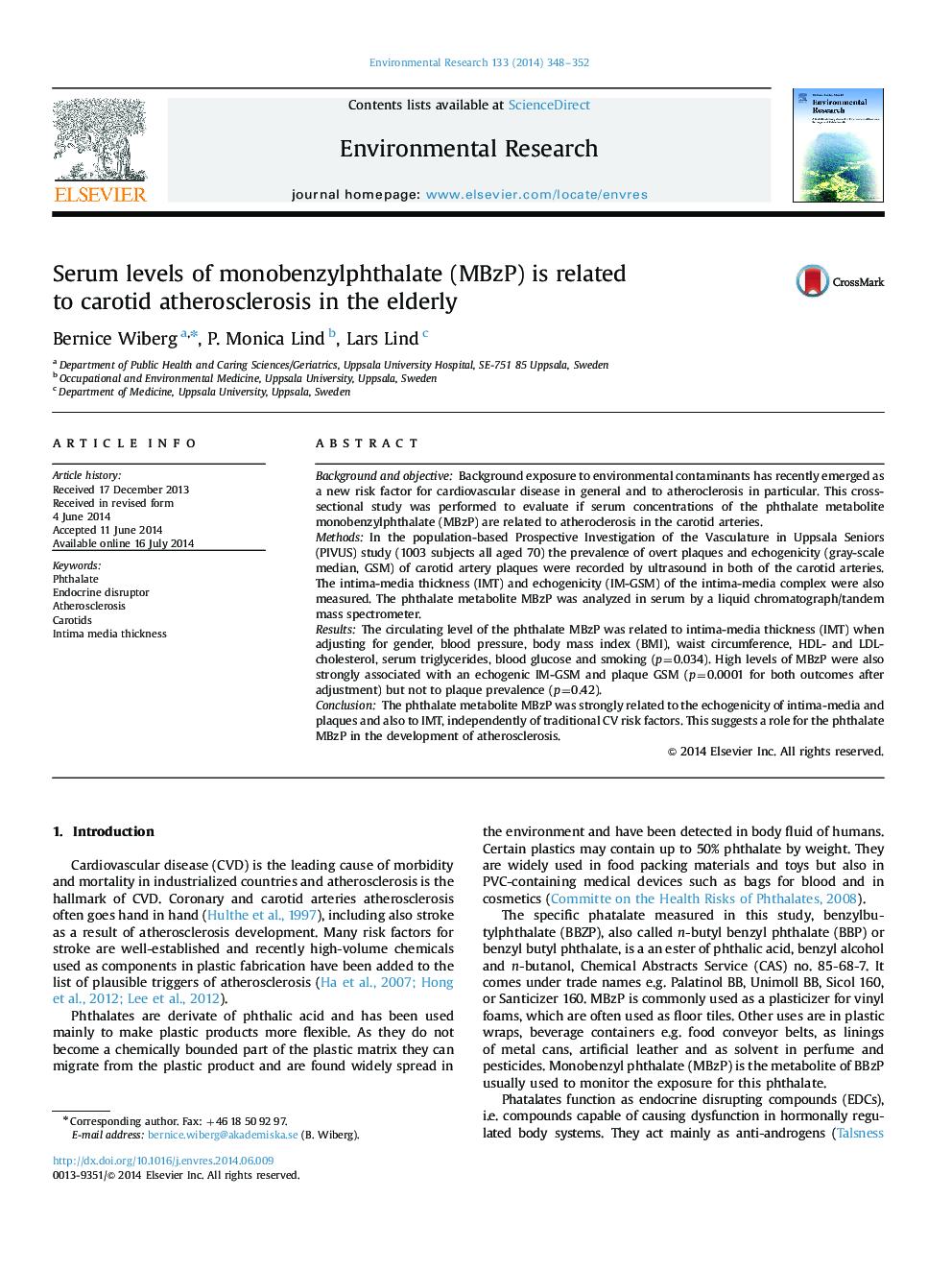| Article ID | Journal | Published Year | Pages | File Type |
|---|---|---|---|---|
| 4469722 | Environmental Research | 2014 | 5 Pages |
•We study levels of a phthalate MBzP in relation to carotid stenosis.•The phthalate MBzP is strongly related to atherosclerosis in the carotids.•We study an environmental contaminant in relation to atherosclerosis.•The endocrine disruptor MBzP used in plastic fabrication and atherosclerosis.
Background and objectiveBackground exposure to environmental contaminants has recently emerged as a new risk factor for cardiovascular disease in general and to atheroclerosis in particular. This cross-sectional study was performed to evaluate if serum concentrations of the phthalate metabolite monobenzylphthalate (MBzP) are related to atheroclerosis in the carotid arteries.MethodsIn the population-based Prospective Investigation of the Vasculature in Uppsala Seniors (PIVUS) study (1003 subjects all aged 70) the prevalence of overt plaques and echogenicity (gray-scale median, GSM) of carotid artery plaques were recorded by ultrasound in both of the carotid arteries. The intima-media thickness (IMT) and echogenicity (IM-GSM) of the intima-media complex were also measured. The phthalate metabolite MBzP was analyzed in serum by a liquid chromatograph/tandem mass spectrometer.ResultsThe circulating level of the phthalate MBzP was related to intima-media thickness (IMT) when adjusting for gender, blood pressure, body mass index (BMI), waist circumference, HDL- and LDL-cholesterol, serum triglycerides, blood glucose and smoking (p=0.034). High levels of MBzP were also strongly associated with an echogenic IM-GSM and plaque GSM (p=0.0001 for both outcomes after adjustment) but not to plaque prevalence (p=0.42).ConclusionThe phthalate metabolite MBzP was strongly related to the echogenicity of intima-media and plaques and also to IMT, independently of traditional CV risk factors. This suggests a role for the phthalate MBzP in the development of atherosclerosis.
